How To Grow And Care For Monstera Siltepecana?
Written by Ivy
Jan 05 2023
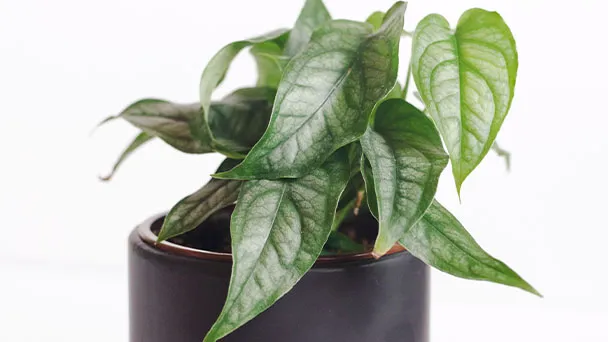
Monstera siltepecana is a rough primitive species, mainly distributed in the high-altitude mountains of Mexico. Monstera siltepecana is evergreen all year round. It is a large indoor potted foliage plant with great ornamental. If you plant a basin of Monstera siltepecana at home, you can not only add tropical style, but also have strong air rooting, nutrient absorption and air purification functions. In particular, the strange leaf shape of Monstera siltepecana is more beautiful than people can refuse. Now let's learn the caring methods and precautions of Monstera siltepecana. In fact, it's not difficult to plant it well!
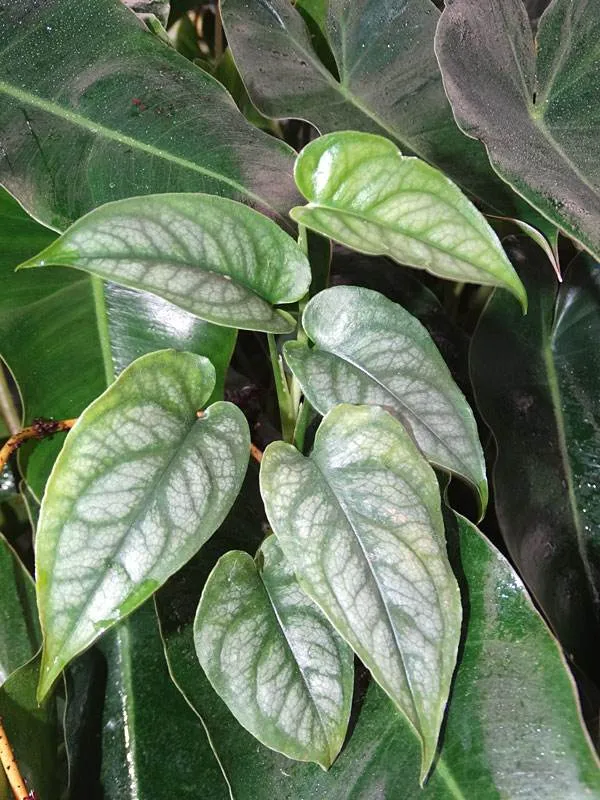 It is best to plant Monstera siltepecana from March to April every spring, because the temperature and humidity at this time are most suitable for the growth of Monstera siltepecana, which can improve the ramet survival rate of Monstera siltepecana, but the specific planting time needs to be adjusted according to the local climate environment and weather conditions, Generally, we can plant Monstera siltepecana when the weather is sunny.
It is best to plant Monstera siltepecana from March to April every spring, because the temperature and humidity at this time are most suitable for the growth of Monstera siltepecana, which can improve the ramet survival rate of Monstera siltepecana, but the specific planting time needs to be adjusted according to the local climate environment and weather conditions, Generally, we can plant Monstera siltepecana when the weather is sunny.
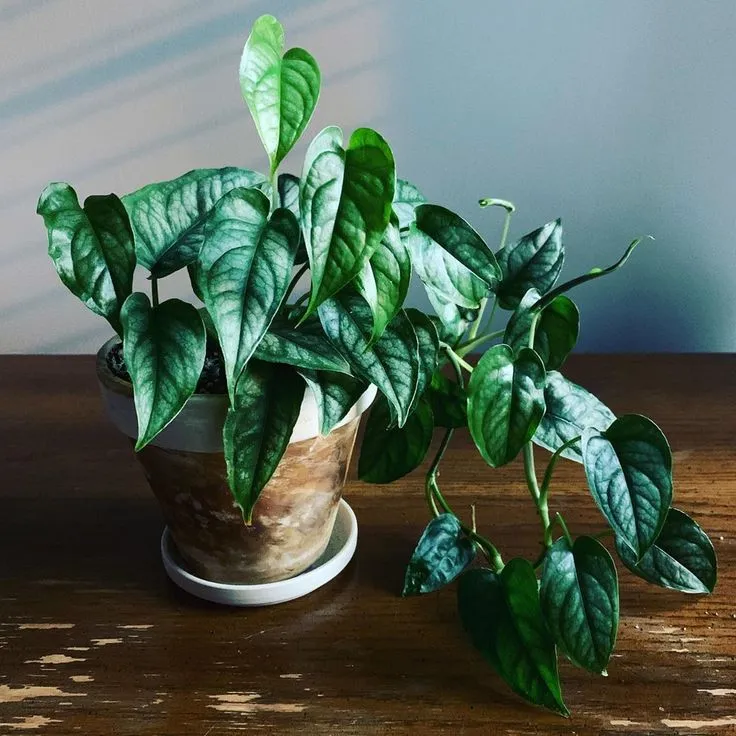
We can raise Monstera siltepecana in a damp and dark place for a period of time, and then in a sunny environment for a period of time. However, we must pay attention to the direct light, otherwise the leaves of Monstera siltepecana will be burned.
Without pruning, the stems and leaves of Monstera siltepecana will be too lush and dense in the long-term growth process, and the branches and vines will also affect the whole plant shape due to rapid growth. At this time, we need to prune plants to achieve a natural and perfect external image.
When we prune Monstera siltepecana, do not use scissors, because the wound cut by scissors will appear squeezed water immersion, and more importantly, it will take a long time to heal. In general, large pruning of potted Monstera siltepecana is not recommended. Of course, there are exceptions: first, when the branches and leaves under Monstera siltepecana wither and turn yellow, they need to be cut off; Second, in order to improve the plant modeling effect, when a main stem grows to about 3 cm thick, bud buds grow on the stem. In this case, it can be pruned, because new branches will soon grow after pruning.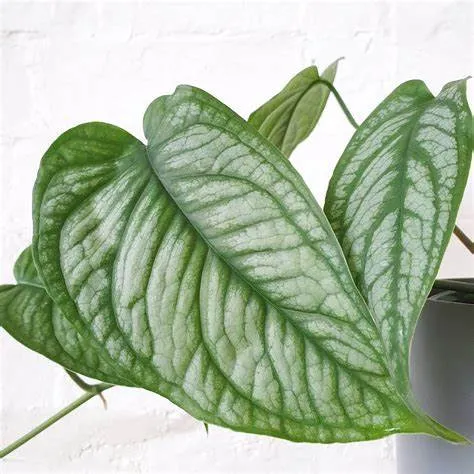
We also need to treat the plants of Monstera siltepecana before repotting. First of all, we need to dig out the monstera siltepecana from the soil. After cleaning its roots with clean water, we can use scissors to cut off the fine roots and poor branches and leaves of monstera siltepecana to help the plant save nutrients. Then we need to apply carbendazim solution to the wound of monstera siltepecana to help the plant heal as soon as possible.
After the pruning wound of Monstera siltepecana is healed, you can plant Monstera siltepecana in the prepared basin soil and bury its roots with an appropriate amount of fine soil. After changing pots, in order to make Monstera siltepecana adapt to the environment as soon as possible, mineral rich river or lake water can be poured into the soil to wet all the soil.
Treatment: we can use the emulsion with the concentration of 2.5% deltamethrin, dilute it to 2000 times and spray it in the solution; It can also be diluted to 3000 times with 10% deltamethrin EC, which is easy to spray and can play a good control effect of Monstera siltepecana. Diseases and pests.
Treatment: we can gently brush the leaves of Monstera siltepecana with a toothbrush, and then spray it with 40% dimethoate emulsion diluted into 1000 times.
Treatment: at the beginning of the disease course, we can remove the diseased leaves and dilute 1500 times with 20% zolone EC. In severe cases, we can spray 6000 times with 40% Nova EC for three consecutive times.
Treatment: we can take out the sick leaves and put them in the ventilated and bright place, dilute the 65% large zinc manganese wettable powder into 600 times liquid spray, then carry out reasonable maintenance to reduce the incidence rate.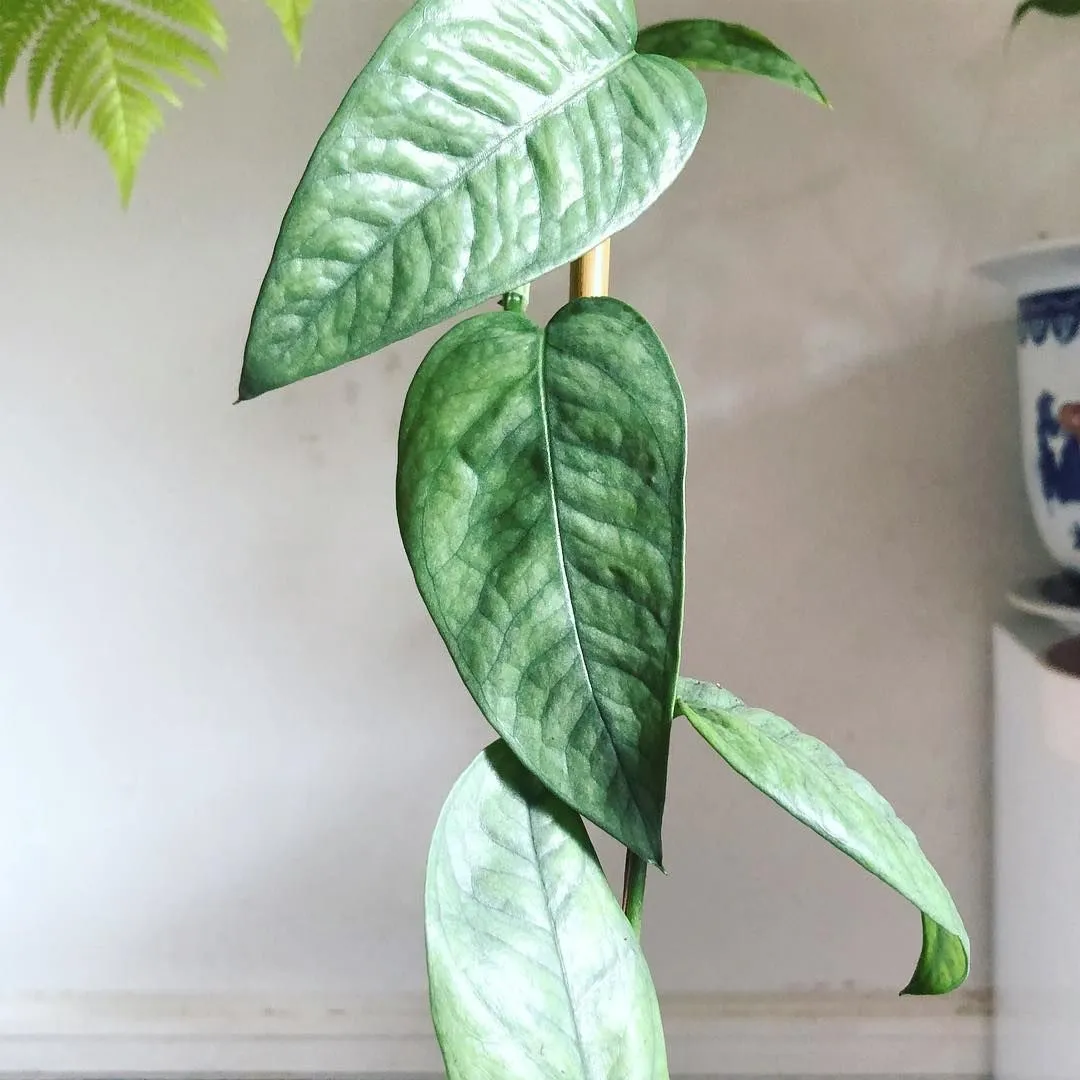
We can disinfect the soil in advance, either with disinfectant or directly exposed to the sun. After that, the seeds of Monstera siltepecana shall be sown on the soil, and a seed shall be sown every 2 to 3 cm.
After the seeds of Monstera siltepecana, we should keep the temperature around the basin within the range of 20 to 25 degrees Celsius. We can lay a layer of film on it to keep the soil moist. The seeds will sprout in less than a month. After it grows leaves, it can be planted separately in different pots.
Monstera Siltepecana Quick InfoWhen to Plant Monstera Siltepecana?When does Monstera Siltepecana Bloom & Harvest?Monstera Siltepecana Care in DetailMonstera Siltepecana WateringMonstera Siltepecana SoilMonstera Siltepecana LightMonstera Siltepecana TemperatureMonstera Siltepecana HumidityMonstera Siltepecana FertilizerMonstera Siltepecana PruningMonstera Siltepecana RepottingMonstera Siltepecana Pest & Disease ControlMonstera Siltepecana PropagationMonstera Siltepecana Propagation from CuttingMonstera Siltepecana Propagation from DivisionMonstera Siltepecana Propagation from Seed
Monstera Siltepecana Quick Info
| Botanical/Scientific Name | Monstera Siltepecana Matuda |
| Common Name | Silver Monstera |
| When to Grow/Bloom/Harvest | Plant in spring |
| Uses | Beautify our surroundings |
| Origin | Southern Mexico and Central America |
| Light Care | Bright, indirect light |
| Soil Care | The soil should never dry out completely |
| Temperature Care | 60 to 95 degrees |
| Humidity Care | High humidity of 60 to 90% |
| Watering | Once a week is sufficient |
| Pruning Care | Prune to control the size and shape |
| Fertilizer Care | Liquid fertilizer |
| Propagation | Taking stem cuttings |
| Toxic | Toxic to animals |
| Flower Color | Green with white |
When to Plant Monstera Siltepecana?

When does Monstera Siltepecana Bloom & Harvest?
The flowering period of Monstera siltepecana is only mature in November and August every year. The newly planted plants will bloom in about 3 years, the flowering period is 8-9 months, and the fruit maturity period will be July of the second year of flowering. To meet the growth requirements, a small monstera siltepecana can blossom in about 5 ~ 6 years. When Monstera siltepecana blooms, the meat spike comes out from the leaf axils at the top of the plant, and is covered with two large bracts, each about 3cm long and 1-2cm wide, in a wide boat shape, milky yellow, quite plump, with sharp apex and narrow base, with longitudinal veins on it.Monstera Siltepecana Care in Detail
Monstera Siltepecana Watering
We can water Monstera siltepecana once a day, once in the morning and evening in summer, spray water on the leaves of Monstera siltepecana and the surrounding environment in dry weather, once every 3-4 days in winter, and spray water on the leaves every 7-10 days. Monstera siltepecana is a wet loving plant, which cannot be exposed to direct sunlight. If the water is insufficient, the leaves will sag, the old leaves at the base will fall first, and the leaves at the stem will curl, yellowing or even dry. We can water monster a siltepecana in the morning or evening when the temperature is low. At this time, there is little difference between the water temperature and the soil temperature, so it is easy for it to absorb water. We should try to avoid watering at noon, because the difference between soil temperature and water temperature is too large at this time. Watering will lead to a sharp decrease in soil temperature and damage the root system of Monstera siltepecana.Monstera Siltepecana Soil
Monstera siltepecana does not have high requirements for soil. For field planting, only loose, fertile and well drained sandy loam should be selected. For pot planting, we can choose the soil mixed with rotten leaf soil, garden soil, coarse sand and organic fertilizer. However, if we prepare our own soil, we must do a good job in soil insecticidal and sterilization, such as exposing the soil of Monstera siltepecana to the hot sun. If you dislike the trouble of soil preparation, you can directly buy universal nutrient soil to plant Monstera siltepecana.Monstera Siltepecana Light
Monstera siltepecana does not need much light. It likes to grow in a semi cloudy environment, but the light in autumn is still strong. If it is kept in a place with strong light for a long time, it is easy to burn Monstera siltepecana, so we'd better cover the light appropriately when the light is strong, You can make Monstera siltepecana thrive.
Monstera Siltepecana Temperature
Monstera siltepecana is not frost resistant and likes a warm and humid environment. It grows vigorously in summer. The most suitable temperature for growth is 20 ° C to 35 ° C. if the temperature is often lower than 10 ° C, its growth will be hindered and it will be in a dormant state. If the temperature is lower than 5 ° C, it is prone to freezing injury, which will lead to large-area yellowing and falling off of Monstera siltepecana leaves, resulting in freezing death and frostbite, Therefore, keeping the turtle bamboo must be kept indoors. If there is heating, the room is especially dry. We need to spray the Monstera Siltepecana leaves regularly to prevent moisture from drying the leaves. As far as possible, keep the yellow leaves away from the radiator and keep them warm. If the indoor temperature is low, you can put a bag and tie holes in it to keep warm and moisturize.Monstera Siltepecana Humidity
Monstera siltepecana is native to the tropical rain forest area. Its original environment is high temperature and high humidity. Therefore, Monstera siltepecana likes to be wet during growth and tries to maintain a high humidity environment during maintenance to create such a maintenance environment. If it is not watered for a long time, it will lead to basin soil drought, the root system can not absorb water, and there is not enough water to grow. In the long run, it will lead to the yellowing and water shortage of the leaves of Monstera siltepecana, affecting the normal growth.We can raise Monstera siltepecana in a damp and dark place for a period of time, and then in a sunny environment for a period of time. However, we must pay attention to the direct light, otherwise the leaves of Monstera siltepecana will be burned.
Monstera Siltepecana Fertilizer
Phosphate fertilizer and potassium fertilizer are very suitable for Monstera Siltepecana. Phosphate fertilizer can make Monstera siltepecana grow stronger and healthier. Potassium fertilizer can make the roots of plants grow stronger and avoid lodging. At the same time, it can also increase the defense of Monstera siltepecana, reduce the invasion of diseases and pests, and increase the cold resistance of Monstera siltepecana. The roots of plants are healthy and strong, so as to better absorb nutrients and water and supply the upper part of plants. Nitrogen fertilizer is very suitable for foliage plants. It can make the leaf color of Monstera siltepeana richer and make the plants more lush. However, if it is not used properly, it is easy to cause the growth of Monstera siltepeana, and in serious cases, it will make the plants vulnerable to the invasion of diseases and pests. For Monstera siltepecana, nitrogen fertilizer is not suitable for it. (Read More: Monstera Root Rot - Signs & How to Treat)Monstera Siltepecana Pruning
First, we need to cut off the rotten leaves and yellow leaves of Monstera siltepecana. Then, according to the needs of plant modeling, we should also trim the branches, stems and leaves that grow too densely, so as to save some nutrient consumption for Monstera siltepecana, concentrate the nutrients on the remaining branches and leaves, and make the stems and branches grow stronger, so as not to cause dumping and disorder.Without pruning, the stems and leaves of Monstera siltepecana will be too lush and dense in the long-term growth process, and the branches and vines will also affect the whole plant shape due to rapid growth. At this time, we need to prune plants to achieve a natural and perfect external image.
When we prune Monstera siltepecana, do not use scissors, because the wound cut by scissors will appear squeezed water immersion, and more importantly, it will take a long time to heal. In general, large pruning of potted Monstera siltepecana is not recommended. Of course, there are exceptions: first, when the branches and leaves under Monstera siltepecana wither and turn yellow, they need to be cut off; Second, in order to improve the plant modeling effect, when a main stem grows to about 3 cm thick, bud buds grow on the stem. In this case, it can be pruned, because new branches will soon grow after pruning.

Monstera Siltepecana Repotting
Proper basin soil shall be selected for Monstera siltepecana repotting. Monstera siltepecana is suitable for growing in soil with rich organic matter and good drainage, so fertile and loose soil can be used for planting Monstera siltepecana. Moreover, the roots of Monstera siltepecana are relatively fragile. It is best to choose a breathable flowerpot with a diameter of about 30cm and a depth of about 40cm for pot replacement.We also need to treat the plants of Monstera siltepecana before repotting. First of all, we need to dig out the monstera siltepecana from the soil. After cleaning its roots with clean water, we can use scissors to cut off the fine roots and poor branches and leaves of monstera siltepecana to help the plant save nutrients. Then we need to apply carbendazim solution to the wound of monstera siltepecana to help the plant heal as soon as possible.
After the pruning wound of Monstera siltepecana is healed, you can plant Monstera siltepecana in the prepared basin soil and bury its roots with an appropriate amount of fine soil. After changing pots, in order to make Monstera siltepecana adapt to the environment as soon as possible, mineral rich river or lake water can be poured into the soil to wet all the soil.
Monstera Siltepecana Pest & Disease Control
- Brown Scale Insect
Treatment: we can use the emulsion with the concentration of 2.5% deltamethrin, dilute it to 2000 times and spray it in the solution; It can also be diluted to 3000 times with 10% deltamethrin EC, which is easy to spray and can play a good control effect of Monstera siltepecana. Diseases and pests.
- Scale
Treatment: we can gently brush the leaves of Monstera siltepecana with a toothbrush, and then spray it with 40% dimethoate emulsion diluted into 1000 times.
- Rust
Treatment: at the beginning of the disease course, we can remove the diseased leaves and dilute 1500 times with 20% zolone EC. In severe cases, we can spray 6000 times with 40% Nova EC for three consecutive times.
- Gray Spot
Treatment: we can take out the sick leaves and put them in the ventilated and bright place, dilute the 65% large zinc manganese wettable powder into 600 times liquid spray, then carry out reasonable maintenance to reduce the incidence rate.
Monstera Siltepecana Propagation

Monstera Siltepecana Propagation from Cutting
For the Monstera Siltepecana propagation from cutting, we should first select the lateral branches of Monstera siltecana. Generally, the strong ones born in the same year are selected as the cuttings, preferably 20 to 25cm long. The leaves at the base of the branch should be removed and only the upper leaflets should be retained. The soil of Monstera siltepecana is preferably mixed with rotten leaf soil, peat or coarse sand. After inserting the cuttings into the soil, pay attention to give them a suitable environment. For example, the temperature should be controlled within the range of 25 to 27 degrees Celsius, and the humidity should be higher. It will take root in about 30 days.Monstera Siltepecana Propagation from Division
The monstera siltepecana propagation from division method is usually carried out in summer or autumn. It is relatively likely to survive and easy to operate. We can carry out monstera siltepeana propagation from division when changing pots, directly remove the whole section of the lateral branches of the healthy and large plants, pay attention to carrying part of the aerial roots, and then plant this part directly in the pot.Monstera Siltepecana Propagation from Seed
Seeds should be collected first for the Monstera Siltepecana propagation from seed. Generally, seeds will be produced after flowering in summer. When the seeds are not mature, management should be strengthened to ensure the healthy and Fruiting of seeds. After the seeds mature, they can be collected. We should choose healthy seeds and soak them in water with appropriate temperature for about 10 hours. The most appropriate water temperature is 40 ℃.We can disinfect the soil in advance, either with disinfectant or directly exposed to the sun. After that, the seeds of Monstera siltepecana shall be sown on the soil, and a seed shall be sown every 2 to 3 cm.
After the seeds of Monstera siltepecana, we should keep the temperature around the basin within the range of 20 to 25 degrees Celsius. We can lay a layer of film on it to keep the soil moist. The seeds will sprout in less than a month. After it grows leaves, it can be planted separately in different pots.
Latest Updated
- Benefits of Bugleweed - 7 Science-backed Health Benefits
- Bugleweed Dangers & Side Effects - Is It Poisonous?
- How to Plant Evergreen Trees - What You Should Know
- When to Plant Evergreens - Grow Guide for Evergreen Trees
- 12 Wonderful Evergreen Shrubs for Your Garden
- 12 Popular Evergreen Plants with Pictures for Beginners
- When And How To Prune A Lilac Bush Like a Pro
- How to Grow & Care for Lilac Vine (Hardenbergia Violacea)
- Japanese Lilac Tree (Syringa Reticulata) Care & Propagation Guide
- Shumard Oak Pros and Cons - What to Know
Popular Articles
- Winter maintenance of Antirrhinum Majus
- How to Grow Terminalia Mantaly Tree
- How to Grow and Care for Crossostephium Chinense
- How to grow Antirrhinum Majus in spring
- Peristeria Elata (Dove Orchid) Profile: Info & Care Guide
- Underwatered Snake Plant (Sansevieria Trifasciata) - Signs And How To Fix
- How to Care for Brazilian Jasmine Plant (Mandevilla Sanderi)
- How to Grow & Care for Graptopetalum Purple Delight in Summer
- Rosa Chinensis (China Rose): Plant Growing & Care Tips
- How to Care for Baby Sun Rose (Aptenia Cordifolia)